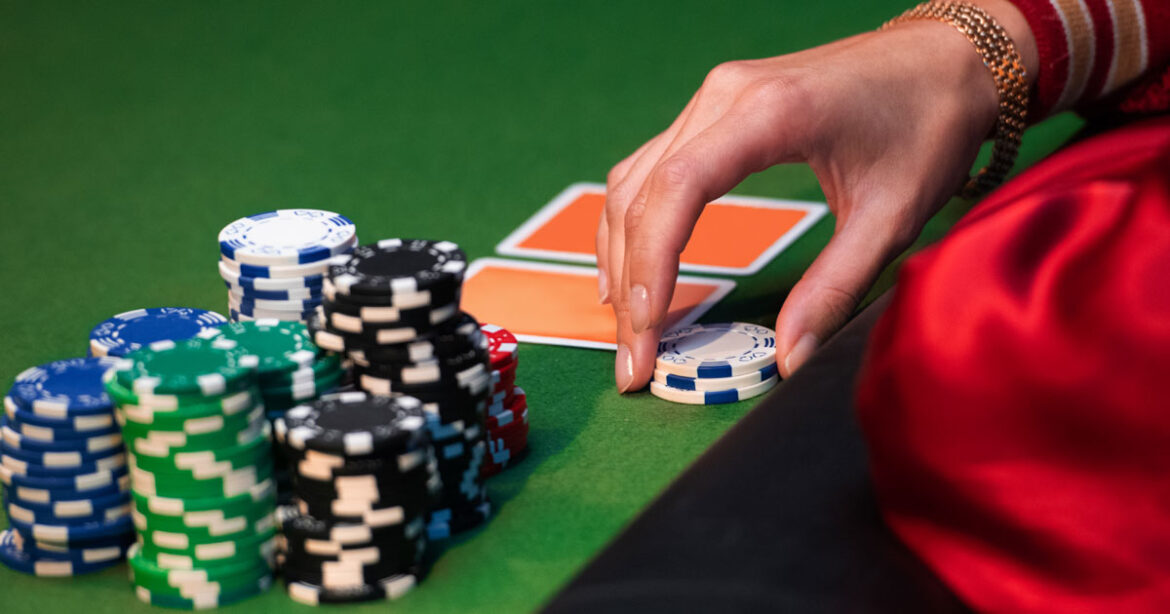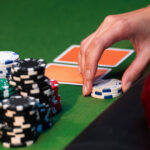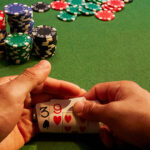How to Play Poker Using Card Counting
One of the many strategies players use to improve their winning chances when playing poker is by counting cards. It involves keeping track of cards in the deck to help you know the best approach. While this strategy is not as effective in poker as in other casino games like blackjack, many players still use it to determine how to bet. Keep reading this guide to learn more about counting cards when playing poker hands.
What Does Counting Cards Mean?
Card counting is keeping track of how many high and low cards are left in the deck. Players give each card a value and keep a running count in their heads to figure out when they’ve got better odds of getting high cards.
While it’s perfectly legal, some casinos don’t allow it and might show you the door if they catch you doing it. You need a good memory, quick maths skills, and the ability to stay under the radar. It won’t guarantee you’ll win, but if you do it right, it can give you a better shot at coming out ahead.
What Is the Easiest Way to Count Cards in Poker?
Counting cards in poker isn’t as tricky as blackjack, but it can give you an edge. Here’s how you can use it:
- Track Exposed Cards: If you’re playing a version like the Seven Card Stud, pay attention to what’s showing face-up. Knowing which cards are out helps you make smarter calls.
- Watch your blockers: The cards in your hand can tell you a lot about what others might (or might not) have. If you have an Ace, your opponents are less likely to be sitting on an Ace-high hand.
- Running Count: Maintain a running count of high and low cards. Assign values to cards (e.g., +1 for low cards, -1 for high cards) and keep a mental tally as cards are revealed. This can help you know a rough estimate of the remaining cards in the deck.
How to Count Cards in Poker
Counting cards requires a few straightforward steps. Check them out below:
Give Each Card a Value
The first thing to do is assign value to the cards using poker hand rankings. You can use the High-Low system to achieve this. Here’s how it works:
- High-value cards (tens, face cards, and Aces): -1
- Low-value cards (twos to sixes): +1
- Neutral cards (sevens to nines): 0
This helps you get a feel for what cards have been played and the ones remaining in the deck.
Keep a Running Total
As cards are dealt, keep a running count by adding or subtracting based on the value of each card. Start at zero and adjust your count as cards appear on the table. For example, if the first three cards are 10, 5, and 2, the running count would be -1 (for the 10), +1 (for the 5), and +1 (for the 2), resulting in a running count of +1.
Getting Your True Count
The running count tells you roughly what’s in the deck, but you need to adjust it based on how many decks are still in play. That’s where the true count comes in. What you have to do is take your running count and divide it by the decks left to be dealt with. This gives you a clearer read on what cards are actually left, helping you make smarter choices at the table.
Putting Your Count to Work
Now that you have an accurate count, let’s explain how to use it. Here are some methods you can use:
Sizing Your Bets
Your count helps you know when to bet big or pull back. If the true count is positive, that indicates many high cards are still left to be played; you simply have a better chance of making powerful poker hands. This is the moment to start increasing your bets. However, when the count falls and it is more likely that there are low cards left in the deck instead of tens or aces, decrease your bets to prevent depletion of your bankroll.
Picking Your Hands
The count also tells you which hands to play. With a high count, you can loosen up and play more hands since you’re more likely to hit something good. When the count is low, tighten up and stick to your strongest starting hands.
How Effective is Card Counting in Poker?
Card counting in poker can be effective when playing in a live casino, but its impact depends on the type of poker game you’re playing. Here are some key points to consider:
- Game Choice Matters:
When playing a version like Texas Hold ’em, counting cards won’t help much since they shuffle all the time, and you’ve got multiple betting rounds. But in Seven Card Stud, where you can see more cards and shuffling is less frequent, keeping track of what has been played can give you an edge. - Skill Level:
You need serious concentration and memory to count cards well. If you can stay sharp and use that information to make smart calls, you’ll have a leg up on players who aren’t paying attention. - Limited Advantage:
Poker isn’t blackjack, where counting cards can really swing things your way. It’s more subtle in this game and can help you make better choices, but it’s not your ticket to winning every hand. - Read Your Players:
Picking up on how your opponents play and bet is usually more valuable than counting cards. But if you can combine both, it’ll enhance your overall strategy.
How Long Does It Take to Learn to Count Cards?
How long it takes you to learn how to count cards will depend largely on your commitment and level of practice. Here’s a general breakdown:
Getting the Basics
In just a few hours, you can learn the basics. You can understand the value of each card and how to count them, which are the most important aspects to learn.
Putting in the Work
If you want to be a professional card counter, practice for weeks or months. Grab a deck of cards and play it at home through some online practice games. It’ll help you learn faster.
Advanced Techniques
Now, if you want to master the whole aspect, like converting to true count and knowing when to bet big or small, it can take longer. You need a few months to a year of dedicated practice. This will help you make strategic decisions based on the count.
Real-World Application
The real test is applying this strategy in a real online casino with all the noise and distractions. That’s another challenge entirely, and it’ll take some time to get comfortable with that scene.
Can You Count Cards in Online Poker?
It is challenging to count cards when you play online poker. The cards are shuffled in the online poker rooms by a random number generator (RNG). This makes it impossible to predict and follow certain cards. The frequent use of multi-decks and continuous shuffling also eliminate any effective card-counting strategy.
Tips for How to Count Cards in Poker
There are some poker tips you can use to make the most of the card-counting strategy. Check them out below:
- Be Discreet:
Unlike blackjack, where it’s easy to count cards more subtly, poker games are usually more social, and you can easily create suspicion. Don’t make it obvious you’re counting; keep it natural and low-key. - Keep Your Head in the Game:
Counting cards in poker takes serious focus. You have to stay sharp and keep the distractions at bay. Once you lose count, it’s tough to get back on track. - Know Your Game:
Each poker variant plays by its own rules when it comes to counting cards. Make sure you know what flies and what doesn’t in your game of choice. This will help you to know if care counting is an ideal strategy. - Mix Up Your Skills:
Don’t put all your chips on card counting. Blend it with other poker smarts like reading players, knowing your odds, and managing your money. That’s how you build a solid game. - Stay Disciplined:
Card counting isn’t something you’ll nail overnight. It requires extra time and effort to get good. Put in the practice time, try different counting methods, and stick with what clicks for you.
Final Thoughts
Even though counting cards is not a very effective strategy for playing poker, it can still boost your gameplay and slightly improve your winning chances. You can easily learn how it works by practising and trying it out in real games. Ensure that you understand the rules and gameplay of your preferred poker variant to be sure counting cards will work. Use all the tips on how to play poker we’ve shared in this guide to use this strategy well.
FAQs on Card Counting on Poker
- Can you actually count cards in poker?
Yes, but it’s not as powerful. It works better in games like Seven Card Stud, where cards stay exposed, rather than in games like Hold ’em, where they’re constantly shuffling. - Will counting cards make me win every hand?
No, it won’t. It’s just one tool in your pocket. Reading players and understanding basic strategy is still more important if you want to learn poker and win more. - Is counting cards in poker illegal?
No, it’s not illegal. Unlike blackjack, where casinos might ask you to leave, poker counting is more complicated to detect and less of a concern for casinos. - How long does it take to learn card counting for poker?
Learning the basics of card counting in poker can take a few hours. But getting good enough to use it in real games while managing everything else will take weeks or months of solid practice. - Do professional poker players count cards?
Some do, but most focus more on other skills. They might track key cards casually, but it’s rarely their main poker tournament strategy for winning.
Last updated: 17.04.2025





